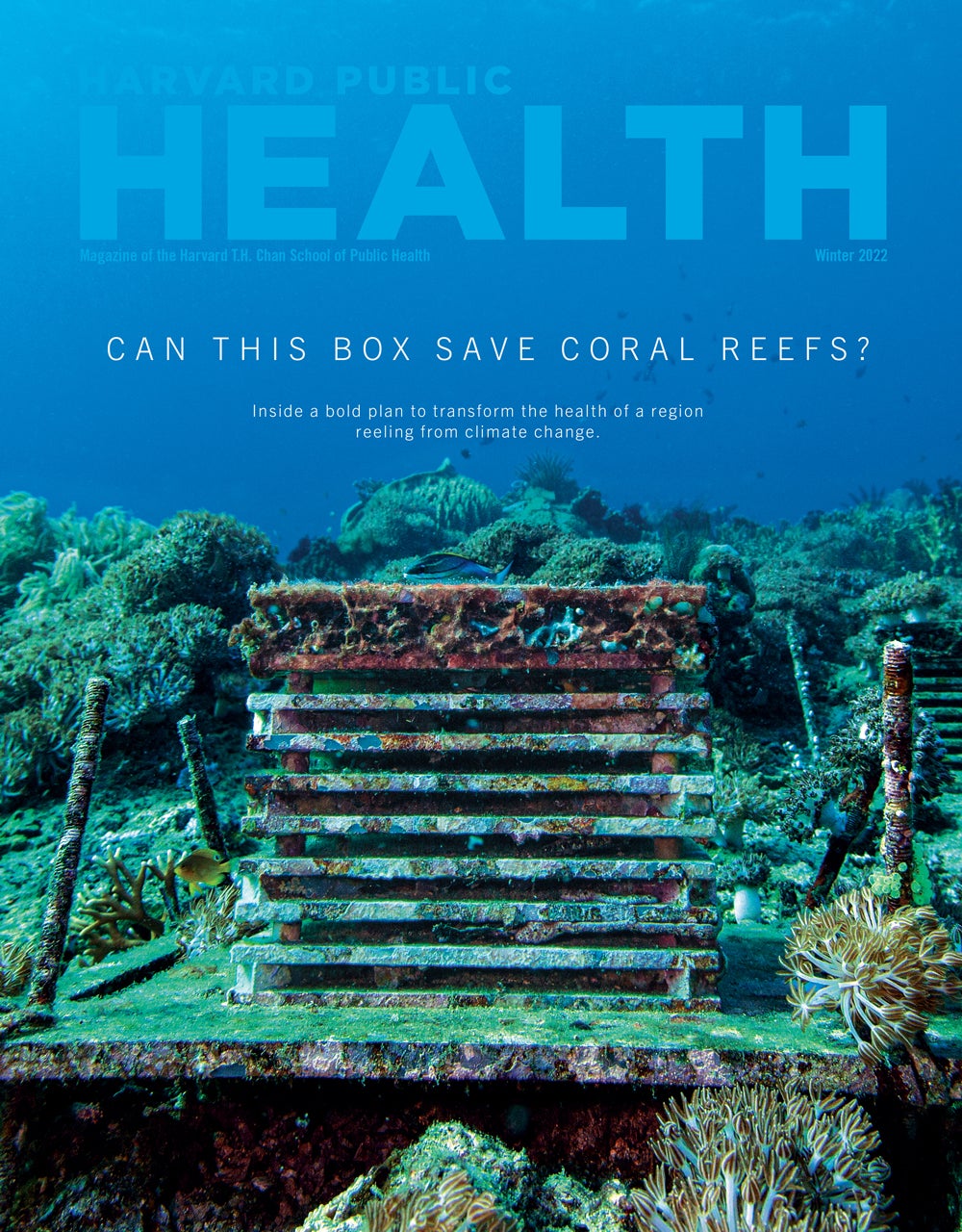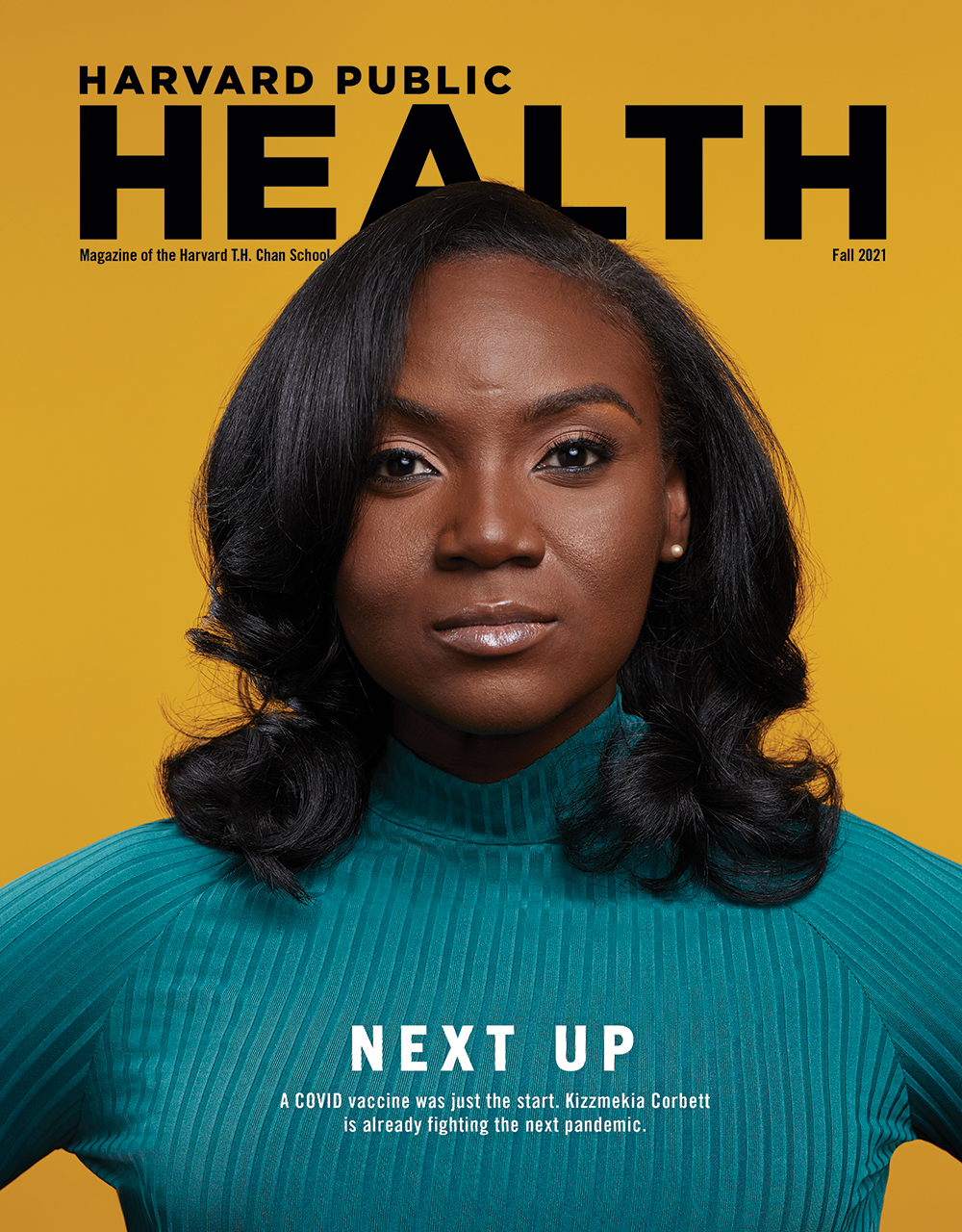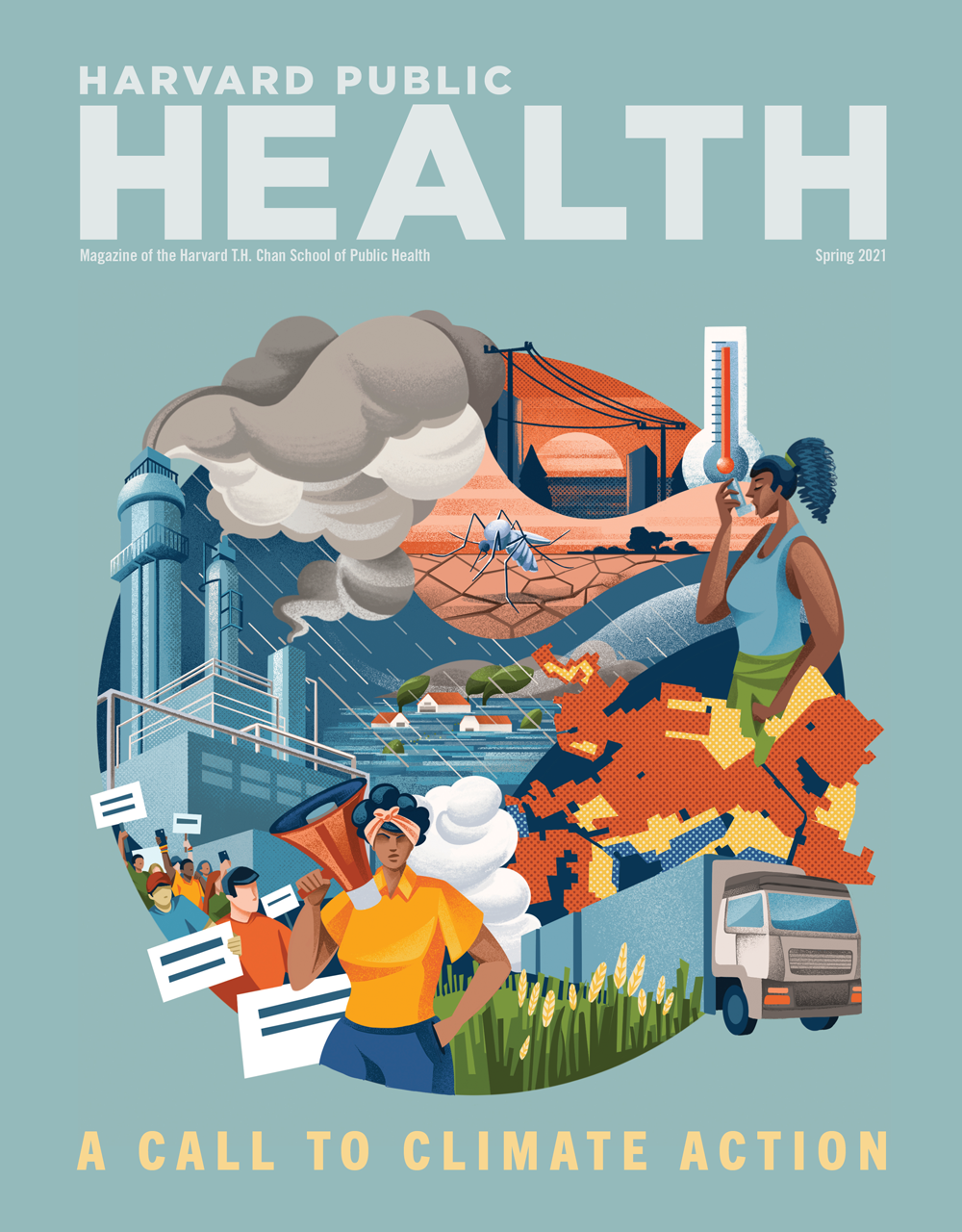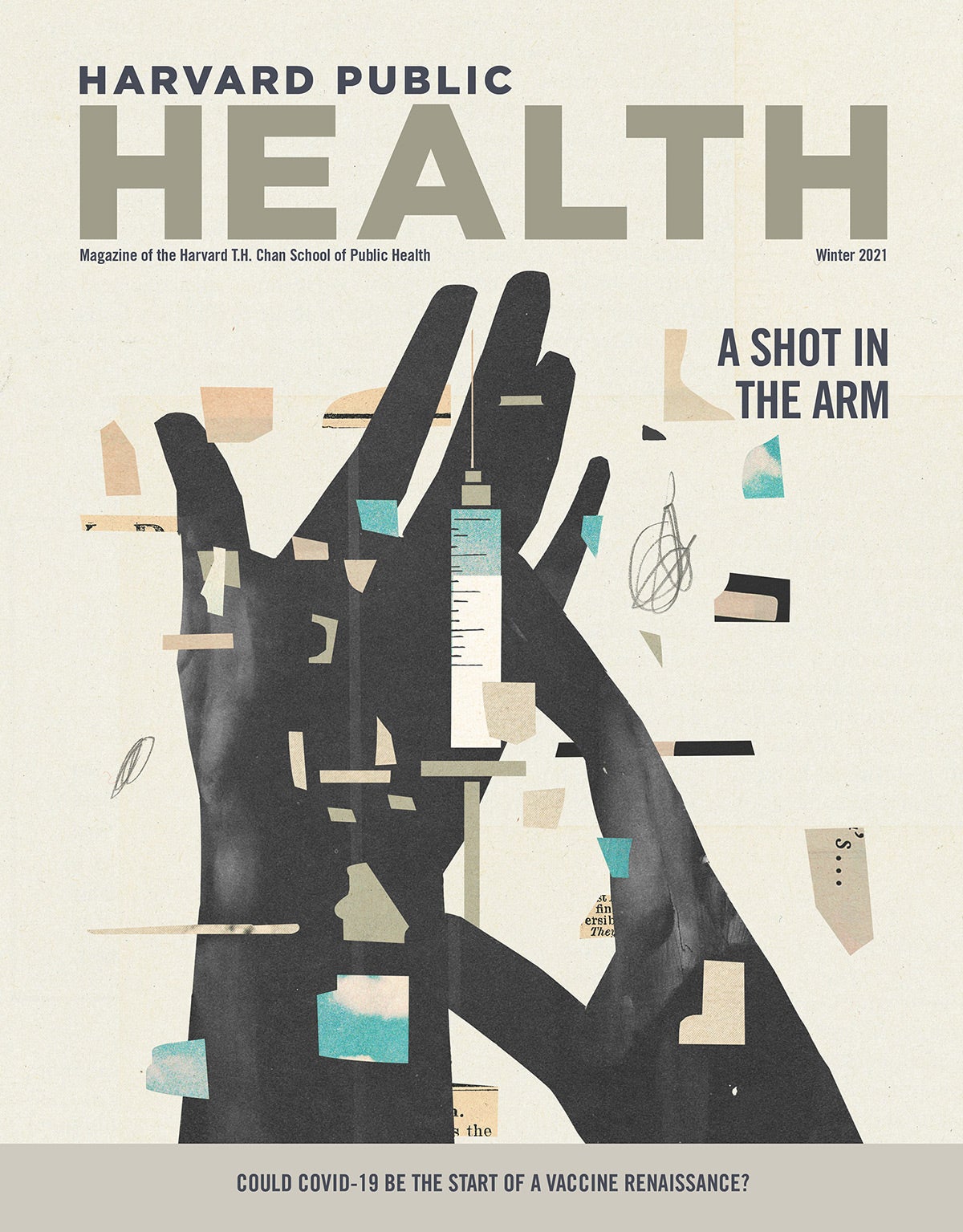THE GREAT RECESSION’S TOLL ON MIND AND BODY
Five years after the Great Recession officially came to an end, the United States has yet to fully recover from the economic devastation sparked by the collapse of an $8 trillion housing bubble and the ensuing turmoil that saw global financial systems teetering on the brink of collapse. But while the economic costs of the downturn have drawn the lion’s share of attention, the damage to our bodies could end up far surpassing the damage to our bank accounts.
“It’s quite stunning we haven’t been hearing more about this,” says Kasisomayajula “Vish” Viswanath, professor of health communication at Harvard School of Public Health. “We talk about poverty and inequality resulting from the recession, but we do not take the next step. We do not extend that logic to the effects on health.”
If the issue is largely invisible in the nation’s news outlets, it is drawing the attention of a growing number of public health researchers, some of whom are beginning to identify possible links between the Great Recession—the worst economic downturn in the U.S. since the Great Depression of the 1930s—and a growing list of physical and mental health ills, from heart attacks to obesity to depression. In addition to cataloging the health harms resulting directly from stress [see below: “The Biology of Chronic Stress,”], many studies suggest that economic pressures may also give rise to a host of unhealthy behaviors—such as bingeing on sugary or high-fat comfort foods, smoking, and drinking to escape worries—as well as to widening economic disparities, which exact a documented toll on people’s health.
Joblessness, the foreclosure crisis, the growing gap between rich and poor: these are not solely economic issues. Yet the full tally of public health costs linked to the Great Recession—at levels ranging from our cells to our health care systems—will not be apparent for many years. “Health is a long-run thing, but the methods we use to analyze current data only estimate short-term effects,” says SV Subramanian, HSPH professor of population health and geography. “It may take awhile for the health impact of the Great Recession to kick in, but once it does, it could be dramatic.”
HOW UNEMPLOYMENT MAKES US SICK
There has long been substantial evidence linking job loss to shorter lives and more health-related problems. A 2009 study on the impact of the 1980s oil crisis and subsequent recession in Pennsylvania, published by economists Daniel Sullivan and Till von Wachter in the Quarterly Journal of Economics, found that in the year after men lost their jobs in mass layoffs, their chances of dying doubled. And though the heightened risk tapered off over the years, it was still significantly higher 20 years later. If such trends were sustained indefinitely, the authors wrote, it would mean a loss in life expectancy of 1–1.5 years for a worker displaced at age 40.
Today, a new generation of researchers is building on this scientific foundation. Sociologist Clemens Noelke, David E. Bell Postdoctoral Fellow at the Harvard Center for Population and Development Studies (Pop Center), is in the final stretch of a study of the health impact of job loss during recessions and the extent to which unemployment benefits may cushion potential harms. Noelke’s research, which draws on data from a massive biannual study, focuses on U.S. workers ages 50 and older between 1992 and 2010—years that include the downturns of the early 1990s and the early 2000s, as well as the Great Recession (2007–2009). Among the health indicators he is looking at: mortality rates, cardiovascular disease, cognition, depression, and unhealthy behaviors such as smoking and drinking.

Why target an older population? “It’s harder for an older person to find a new job, and older individuals have more health conditions to begin with,” Noelke explains. “They’re also becoming a larger proportion of the workforce.” By 2016, one-third of the U.S. workforce will be age 50 and up.
While Noelke is not yet talking publicly in detail about his findings (currently under peer review), he expects the results to be in line with existing studies from European countries and the U.S. The studies have consistently tiedunemployment to elevated death rates. A 2011 meta-analysis of international research—published in Social Science & Medicine by David Roelfs, Eran Shor, Karina Davidson, and Joseph Schwartz—found that the risk of death was 63 percent higher during the study periods among those who experienced unemployment than among those who did not, after adjusting for age and other variables.
Some argue that this can be explained by the fact that sicker people are more likely to end up unemployed. But studies focusing on workplace closures—where all employees are let go—suggest otherwise. A 2009 report by University of Albany sociologist Kate W. Strully in the journal Demography found that losing a job when a business closes increased the odds of fair or poor health by 54 percent among workers with no preexisting health conditions, and increased by 83 percent the odds of new health conditions likely triggered by job loss—stress-related conditions such as stroke, hypertension, heart disease, arthritis, diabetes, and emotional and psychiatric problems.

Such findings would come as no surprise to those who responded to a 2010 poll, conducted jointly by Knowledge Networks and investigators at HSPH led by Gillian SteelFisher, a research scientist in the Department of Health Policy and Management. The survey found that many people with heart disease, diabetes, or cancer believed that the downturn was hurting their health and that these negative impacts would only worsen over time. Among the facts unearthed by the poll: About a third of those with heart disease or diabetes and a fifth of those with cancer blame the economic downturn for forcing them to use up their savings to deal with medical bills, co-payments, and other expenses related to their illnesses. More broadly, according to the poll, some 4 in 10 Americans with heart disease or diabetes and 1 in 5 with cancer said the downturn had made it more stressful for them to manage their illnesses, a scenario that in itself may have exacerbated existing health problems.
CASCADE OF CATASTROPHE
The United States is unique among developed countries in its historic reliance on employers to provide health insurance—leaving those who lose their jobs not only without an income but also without health care. While passage of the Affordable Care Act (ACA) in 2010 set the stage for a different scenario, it is not yet clear that the law will result in better health outcomes for the unemployed or underemployed.Katherine Baicker, professor of health economics, co-authored a 2011 paper published by the National Bureau of Economic Research that showed that the improved access to Medicaid resulting from the act raised rather than cut costs; yet while the price of care increased, people reported better health and fewer financial strains associated with health care costs.
The United States is unique among developed countries in its historic reliance on employers to provide health insurance—leaving those who lose their jobs not only without an income but also without health care.
Although joblessness has been a major problem in Europe, the unemployed face special challenges in the United States. “Earnings loss because of job loss seems to be larger in the United States, because after unemployment benefits run out, people are often forced to take jobs that don’t match well with their skills,” says Noelke.
Others agree. “If you look at countries with strong social safety nets, it’s not as dire for people who are out of work,” says Laura Kubzansky, professor of social and behavioral sciences. “It’s unpleasant, but it doesn’t set up this cascade of catastrophe in the way that it can in this country, where the only net people have once unemployment runs out is frequently their family and savings.”
Foreclosure is equally traumatic. As a result of the subprime mortgage crisis that led to the Great Recession, more than 13 million American households were foreclosed between 2008 and 2013. That sprawling calamity yielded “a stressful life event of prolonged duration, with multiple phases of variable intensity,” wrote HSPH assistant professor of social and behavioral science Reginald Tucker-Seeley and co-authors Gary G. Bennett and Melissa Scharoun-Lee, both of Duke University, in a June 2009 essay titled “Will the Public’s Health Fall Victim to the Foreclosure Epidemic?”
FORECLOSING ON HEALTH
First the birds started dying—falling out of trees, found floating in backyard swimming pools. Then humans began to develop strange and frightening symptoms: tremors, confusion, and occasionally paralysis.
It was May 2007 in Bakersfield, California—a city hard hit by the nation’s foreclosure crisis—when the first cases appeared of what was ultimately determined to be West Nile virus infection, a mosquito-borne disease that sometimes leads to fatal brain damage. But if the diagnosis was clear, the cause was anything but, especially given that public health experts had considered this to be an unusually low-risk year.
The answer finally came in the form of aerial photos of Bakersfield. The images revealed hundreds of swimming pools, birdbaths, and Jacuzzis—an estimated one out of six—covered in green fuzz. Almost all of their owners had decamped, leaving empty homes and signs that said “For Sale” or “Bank-Owned Foreclosure.” Ultimately, investigators found more than 4,000 mosquito larvae infected with West Nile strains in 31 neglected pools. What began as a foreclosure crisis had become a public health menace, wrote sociologist David Stuckler, a former HSPH faculty member now at Oxford University, and Sanjay Basu, an assistant professor of medicine and epidemiologist at Stanford University, in their 2013 book The Body Economic: Why Austerity Kills.

Losing a home, in other words, may endanger not only the home dweller’s health but also the health of neighbors.
At HSPH, Mariana Arcaya, Yerby Postdoctoral Research Fellow at Harvard’s Pop Center, is also tackling the issue. Lead author of a 2013 report in the American Journal of Public Health, she discovered that people who live near foreclosed homes may be at greater risk of being overweight than those who don’t have such properties in their immediate neighborhoods.
Arcaya’s interest was in demonstrating the “spillover effect” of the foreclosure crisis—that is, its impact on those whose own homes did not fall prey to foreclosure. Because Americans so often view health outcomes as reflecting individual choices, Arcaya explains, it was important to show that even those who do everything “right” could be affected. “It’s easy to think ‘You’re the kind of person who let your home go into foreclosure, so you are also more likely to be the kind of person who gains weight. You’re irresponsible!’” she says. “Spillover effect reveals harmful structural forces in the larger economy.”
Arcaya and her colleagues analyzed housing and medical data from 2,078 study participants in Massachusetts from 1987 to 2008, looking at foreclosure records as well as the volunteers’ proximity to foreclosed homes and their body mass index (BMI) levels. They found that living within 100 meters of a foreclosed home was associated with a higher BMI of .2 units—the equivalent of a 1.3-pound weight gain in a 5-foot-6-inch person.
Some 4 in 10 Americans with heart disease or diabetes and 1 in 5 with cancer say the downturn had made it more stressful for them to manage their illness.
What accounts for higher obesity rates among those living near foreclosed homes? Perhaps people are less likely to be physically active when they live in places hit by foreclosure. “You may not want to walk your dog, go running, or garden as much when the physical environment is less appealing,” says Arcaya. “There may be houses boarded up. It may not feel as safe.”
Even more likely, Arcaya suspects, is that weight gain could stem from added stress fueled by factors that include anxiety over declining property values in the neighborhood. “Real estate is location, location, location, and zoning is such that if my house is 2,000 square feet, a foreclosed house is also probably 2,000 square feet. Why should someone buy my house when they don’t want to buy that house? Who would put faith in my neighborhood right now?”

Whatever the pathways turn out to be, HSPH experts believe that the nation’s foreclosure crisis will be leaving its imprint on public health far into the future. “Health is not something that can be miraculously revived overnight,” Vish Viswanath says. “Even if foreclosures go down, even if people manage to regain a foothold in mainstream society, the consequences will be long-lasting.”
TOXIC INEQUALITY
At the beginning of his bestselling book Outliers, Malcolm Gladwell tells the story of Roseto, Pennsylvania, a town settled by Italian immigrants that in the 1950s was found to have astonishingly low rates of heart disease and other leading killers of the era. For men over 65, the death rate from heart disease was roughly half that of neighboring towns and the nation as a whole. More broadly, the death rate from all causes was roughly a third lower than what would have been expected.
After ruling out the obvious causes—genetics, diet, and exercise—medical researchers came to a remarkable conclusion: The source of residents’ unusual good health was the community’s rich social ties and egalitarian ethos.
While not focused on the wealth divide per se, the Roseto follow-up study is in line with a growing body of research suggesting that extreme income inequality may also be bad for health. Such findings are of particular concern, given the ever-widening gap between rich and poor in the United States—a trend that began during the 1970s and has deepened since the Great Recession.
What began as a foreclosure crisis became a public health crisis in one community when West Nile virus spread through neglected pools on foreclosed properties.
According to Emmanuel Saez, an economist at the University of California, Berkeley, the U.S. economic recovery since 2009 has mostly benefited the rich. From 2009 to 2012, he wrote in a 2013 report, the average income of the top 1 percent of Americans grew by 31.4 percent, while for the bottom 99 percent income grew by only 0.4 percent. Put another way, the top 1 percent captured 95 percent of income gains.

To be sure, the question of how—or if—inequality harms health is fiercely debated. One hypothesis is known as social comparison—what most of us think of as “keeping up with the Joneses.” A seminal 2008 study in the Journal of Human Resources found an association between “relative deprivation”—a calculation that takes into account both the incomes of the individuals being studied and that of the people with whom they are likely to compare themselves—and risk of death. They reported that each 1.0 standard deviation increase in the index used to calculate relative deprivation was associated with a 57 percent higher risk of death population-wide, as well as with other stress-related health outcomes such as increased risks of smoking, obesity, and use of mental health services.
As Kawachi sees it, the United States is an especially fertile breeding ground for stress-related discontent and shame. “Americans think you can just be like Bill Gates or Warren Buffett, but data on social mobility say just the opposite,” he says. “When people try hard and fail—which happens a lot during economic recessions—they end up blaming themselves.” He adds: “We were already one of the most unequal societies—and we just became more unequal, thanks to the Great Recession. And the more unequal a society is, the worse its average health measures tend to be.”
This fact is borne out in statistics showing that the U.S. lags far behind peer countries in the Organization for Economic Cooperation and Development, in measures ranging from life expectancy to anxiety to homicide and drug abuse deaths. “We don’t have to wait another 10 or 15 years to see the smoking gun of the 2008 recession,” Kawachi observes. “Just look at the current statistics. The Great Recession made everything much worse, but we were coming from a pretty bad place.”
PAINTING THE BIG PICTURE
“If the data are not there, you don’t know the problem exists,” says Nancy Krieger, professor of social epidemiology. She admires the example of public health statistician and economist Edgar Sydenstricker, who in 1933 led an unprecedented 10-city study in the U.S. to evaluate the health impact of the Great Depression. His survey included fine-grained details not only about health outcomes, but also about wages, unemployment, diet, food insecurity, alcohol consumption, state of mind, and other facts. “What they found was very interesting,” Krieger says. “Some of the people who did psychologically worst were those who had previously been OK, if not somewhat affluent, and ended up suddenly being poor; they didn’t know how to handle it.”
In the same vein, says Krieger, we need to pose similarly nuanced questions to understand what’s driving disease trends and health inequities in the wake of the Great Recession. And such investigations, she cautions, take time. “One of the dangerous things when researchers conduct these kinds of studies is to expect fast results—and if they don’t get them, to claim there is no harm.”
Adds Viswanath: “The impact of stress, lack of treatment, lack of capacity to manage one’s life, increased smoking or drinking, eating unhealthy foods, family breakups: those consequences are long-lasting.”
PROTECTING HEALTH IN BAD ECONOMIC TIMES
Along with collecting data and pushing for better safety nets, HSPH faculty are exploring ways to buffer people from the health impacts of economic downturns. Laura Kubzansky, for example, is looking at the biology of resilience. “What are the resources that would mitigate the impact of stress?” she asks. “What are the assets that enable people to meet life’s demands in a hardier way? Wouldn’t it be great if we knew the answers and put some proven protections in place before the next recession?”

More specifically, Kubzansky and other researchers are seeking to determine whether positive psychological factors and emotional states shield people from coronary heart disease (CHD). Several studies have found that optimistic people have about half as much risk of developing CHD as their more pessimistic peers. Another study has linked optimism to a slower rate of atherosclerotic progression over a three-year period. And decades of health psychology research have demonstrated the positive impact of social support—such as family, friends, neighbors, co-workers, pets, and governments and organizations that can lend assistance—on physical well-being and longevity. As researchers identify individual-level factors that promote resilience, they also want to understand the structural and social arrangements that promote or hinder these advantages.
“What drives resilience in some individuals? What leaves others more vulnerable?” asks Williams. “Those are the public health questions we need to answer.”
A NEW PUBLIC HEALTH AGENDA
In essence, all of us who lived through the recent recession are part of a massive experiment that is still under way. “Thank you for participating in this clinical trial. You might not recall signing up for it, but you were enrolled in December 2007, at the start of the Great Recession. This experiment was not governed by the rules of informed consent or medical safety. Your treatment was not administered by doctors or nurses. It was directed by politicians, economists, and ministers of finance.” So wrote David Stuckler and Sanjay Basu in The Body Economic, making the case thateconomic policies can have profoundly toxic public health impacts—or profoundly restorative effects when nations increase spending during economic downturns for programs such as health care, food stamps, and housing.
But in American culture, this broad social perspective is a hard sell. “The idea that people can collectively act to change things cuts against the American myth of self-sufficient individuals who pull themselves up by their bootstraps,” says Krieger. “Linking economics to health, and suggesting that there’s a social production of disease, is not the mainstream analysis—even as it’s very common in other countries.”
In essence, all of us who lived through the Great Recession are part of a massive experiment still underway.
Another argument for a broader frame of reference is the fact that public health and economic prosperity is a two-way street. It’s not surprising that President Franklin Roosevelt’s New Deal—the panoply of social and economic programs enacted between 1933 and 1938 and credited with pulling the country out of the Great Depression—has been described as a massive public health program. And as David Bloom, the Clarence James Gamble Professor of Economics and Demography, has shown, not only does wealth make health, but health makes wealth—in part because healthier people are more productive and less likely to cost health care dollars. These findings suggest that a national focus on improving Americans’ health even in economic downtimes can be part of an overall economic stimulus.
For public health practitioners, acting on lessons from the Great Recession will require both energy and ingenuity. “There has to be an activist agenda,” says Viswanath, with academics translating the evidence in ways that inform public discourse—and, in turn, national programs and policies. “We are fixated on the upstream factors—the recession and its direct economic costs. But the downstream factors—the terrible impact on health—are already far along.”
Amy Gutman is a senior writer for Harvard Public Health.
Spring 2014







